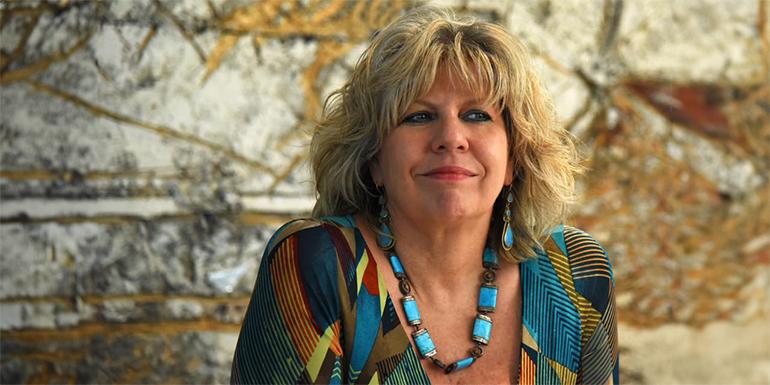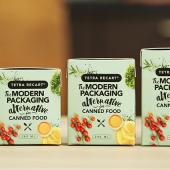Caselli: “Fruit and vegetables at export risk; a reduction in consumption and food waste without plastic packaging”
The president of Areflh: “I believe there are grounds for challenging the restrictions on fruit and vegetable packaging, in various contexts”
The President of Areflh, the Assembly of European Regions producing Fruits, Vegetables and Ornamental Plants, representing around 50% of the European fruit and vegetables industry, Simona Caselli, has a very broad overview of the impact of the PPWR on fruit and vegetable and fresh food production, with an international outlook that allows her to outline the risks and opportunities of legislation that has a number of dubious aspects for the sector.

«After the conclusion of the Trilogue, the fruit and vegetables sector is one of the most affected by decisions linked to the PPWR» Caselli affirms. «The impact is most of all on exports, which risk suffering significant damage due to the fragmentation of the Single Market, but also on food waste and the shelf-life of products. The key area for the sector is annex 5, from which the Parliament had appropriately excluded fruit and vegetables, which has remained unaltered in every phase of the Council and Trilogue process, in which the prohibition of packaging in generic plastic is established, therefore excluding also the use of compostable ones for fruit and vegetables under a kilo and a half.
Transport is a big problem because cardboard and wood do not guarantee the same degree of preservation, with inevitable consequences for food safety, and the quality and preservation of the product. And the possible national exceptions to prohibitions certainly don’t help the sector, as infinite varieties of formats will be requested inside the Single Market, causing significant problems for exporting companies. We know that plastic is part of an environmental problem to be dealt with, and it’s right that the Regulation provides for its reduction, but having adequate recovery systems to prevent its dispersion in the fruit and vegetables sector is, nevertheless, a strategy that reduces food waste and currently has no equally effective alternatives. Progress has been made from the initial text, which even imposed the sale of only loose products under a kilo and a half. It should not be forgotten that packaging is not only practical, but is also essential for preserving the product, for knowing its origin, the farming methods, and for communicating its nutritional qualities both from a marketing point of view and for informing the consumer. A Qr code only on the crate is certainly not the solution for properly informing the consumer and using wood and cardboard is not a conclusive solution, especially for fruit and vegetables that move within the Single Market, in which plastic packaging is crucial for guaranteeing the adequate quality of the product at its destination.
Alternatively, reusable cellulose netting or cardboard boxes have been proposed: both are solutions which present obvious storage, product integrity and microbiological risks. The idea of inserting compostable or composite plastics as a possible solution was an excellent one, but they are not mentioned in annex 5, while the Commission reserves itself the right to observe the technological evolution of new materials to evaluate effective sustainability. A different issue is processed products, such as salad in bags or pre-cooked vegetables, in which the packaging has never been questioned, for obvious hygienic reasons.
An inexplicably punitive approach reserved for fruit and vegetables has prevailed, linked more to the point of view of the Environmental Commission rather than the Agricultural one, preferring the solution already adopted some years ago in France, a country that produces mainly for the internal market and has a lower percentage of sector exports than that of Italy and other Mediterranean countries. What is more, the consequences of the French law after three years of application are worrying, given that, with cardboard packaging that reduces the visibility of the product, consumption of fruit and vegetables has fallen by more than 20%, with serious consequences, not only for the market, but also the balance of diets. Although this fact is evident, in my opinion there has been a general lack of the ability and will to dialogue with the different components of the fruit and vegetable production industry.
I think that annex 5 should be rewritten, including at least compostable and composite plastic, and permitting exceptions to the prohibitions for specific products such as, for example, cherry tomatoes and apples, or for a very difficult product to handle such as pears, on the basis of a common European list defined by EFSA according to scientific criteria.
Italy is a leader in European fruit and vegetable exports: the fact that every member state can establish exceptions to the prohibitions of plastic packaging based on their own lists of products is a very serious problem, because the same product could have a different packaging depending on the country of destination, to which exporters have to adapt. This is an unmanageable and absurd situation, in clear violation of the “common” principle of the EU internal market. The most affected producers are ones in Mediterranean countries like Italy, Greece and Spain and, for north Europe, Belgium and Holland; the latter, which carry on trading activities, could find themselves receiving products from countries outside the EU, and then having to unpack and re-pack them on the basis of the final market of destination, with enormous additional costs and consumption of material.
Finally, I believe there are grounds for challenging the restrictions on fruit and vegetable packaging, in various contexts. The PPWR has in fact, been proposed as a market regulation, not as an environmental regulation; in this second case, the national exceptions would be admissible, but with relation to market regulations, interventions that fragment the Single Market (one of the Cornerstones of the Union) should not be permitted.”





















